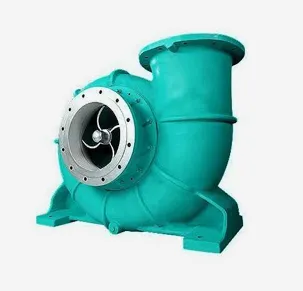Sewage is something that every property has to deal with – whether you like to think about it or not.
The thing is, plenty of people don’t like to think about it. Whether it be moving into a new home, or securing a new premises for your business, its very easy to either forget (or not know) to ask about the specifics of flushing a toilet.
So, if you are in a property, or in the process of purchasing or renting one, how can you be sure whether that property makes use of a sewage pump?
What Is a Sewage Pump?

The first thing you will need to know about when it comes to discovering whether your property makes use of a sewage pump is understanding what they are, and why they are installed.
Sewage pumps, in general, are installed in properties where some of the sewage pumps or drains connected to the sewage line fall below the actual level that the drains sit on.
This means (for example) if your property has a basement that contains something like a sink, shower, or toilet, its very likely that you will have a sewage pump connected so that all of the wastewater can be pumped up into the sewage system without issue.
The need for a sewage pump isn’t contingent on having a basement though. As long as your property has need to push its sewage upwards through the drainpipes, then the sewage pump will be necessary to help the flow against gravity.
It’s important that you don’t get confused between the terms ‘sewage pump’ and ‘sump pump. You can read more on the differences between the two here, but simply put; a sewage pump deals specifically with wastewater, where as a sump pump deals with flood water, and other water ingress.
Non Clog Sewage Pump
How Does a Sewage Pump Work

Stripped back to its fundamentals, a sewage pump is very easy to explain. All of the wastewater that needs to be pumped into a connected sewage system enters the pump via a connected pipe, and is deposited into a tank.
There are three different kinds of sewage pumps, and you can read all about the differences between them here. Simply put though, the sewage pump will either grind up the sewage in the tank if it is equipped to do so, or simply pump out the untreated sewage to the connected sewage system if that is how the pump in question operates.
The pump will automatically trigger its emptying process once a switch within the tank is switched. This will trigger the motor to run, creating centrifugal force, which pushes the waste into the impeller, and ultimately through the discharge pipe to the connected sewage system, be it the actual sewers, a septic tank, or otherwise.
How To Check if Your Property Has a Sewage Pump
Usually sewage pumps (and sump pumps) are classed as submersible. This means that they could be sunken into the ground itself, so upon initial inspection it might be difficult to find a sewage pump – especially if its covered by a carpet or other flooring.
One easy way for you to find out if your property has a sewage pump is to listen out for it. Have someone else flush the properties toilet several times, and listen carefully on your properties ground, or below ground floor, for the sound of your sewage ejector pump to turn on.
If you can hear the sounds of the pump working, then the chances are that you have a working sewage pump on your property.
However, if you want to be doubly sure that the below ground pump is a sewage pump, rather than a sump pump that is coincidentally ejecting its contents at the same time you are flushing your toilet there are a few more checks you can do on the pump itself.
First, sewage pumps are going to clearly marked as such, so have a look on the lid of the pump to see if its marked as a sewage pump. You will also notice that a sewage pump has a sealed lid, for obvious odour containing reasons.
You will also notice that a sewage pump will usually have two pipes coming out of the top. One of these pipes is for your waste water, and the other to safely vent the gases produced by the sewage within your sewage pump tank.
So, if you have determined that you have a sewage pump, what next? Well, the logical step is to have it looked over to make sure that its in full working order. There are a number of different ways to do this, but if you aren’t trained in submersible pump usage, then the best way is with a visit from a trained professional.
An engineer from the Basement Sump & Pump Company can visit your property and conduct a full examination on any and all pumps in your property – including your sewage pump. Not only will they be able to evaluate the condition of the pump, but our team can also diagnose any repairs that need to take place, and set up a regular calendar appointment for routine maintenance visits in the future.
These visits go a long way in preventing the degradation or untimely breaking of the pumps in your property. They help you swerve disaster, flooding, and other mightily unpleasant incidents that can arise from having your sewage pump break down.
We cannot stress enough that we do not encourage anyone to open, repair, or otherwise tamper with a sewage pump on their property unless they are fully trained to do so.
Not only could you break the pump itself, but your risking exposure to some nasty biological waste that if handled incorrectly can lead to some serious illnesses.












